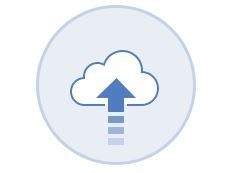Common April Tax Questions Answered!
Renee Daggett • April 8, 2022

The individual tax deadline of April 18th (yes, this year it's April 18th!) is fast approaching.
Here are answers to five common questions that taxpayers typically ask in April.
- What
happens if I don’t file on time?
There’s no penalty for filing a tax return after the deadline if you are set to receive a refund. However, penalties and interest are due if taxes are not paid on time or a tax extension is not requested AND you owe tax.To avoid this problem, file your taxes as soon as you can because the penalties can pile up pretty quickly. The failure-to-file penalty is 5 percent of the unpaid tax added for each month (or part of a month) that a tax return is late. - Can
I file for an extension?
If you are not on track to complete your tax return by April 18th, you can file an extension to give you until Oct. 17, 2022 to file your tax return. Be aware that this is only an extension of time to file — not an extension of time to pay taxes you owe. You still need to pay all taxes by April 18th to avoid penalties and interest.So even if you plan to file an extension, a preliminary review of your tax documents is necessary to determine whether or not you need to make a payment when the extension is filed. - What
are my tax payment options?
You have many options to pay your income tax. You can mail a check, pay directly from a bank account with IRS Direct Pay, pay with a debit or credit card (for a fee), or apply online for an IRS payment plan.No matter how you pay your tax bill, finalize your tax payment arrangements by the end of the day on April 18th. - When
will I get my refund?
According to the IRS, 90 percent of refunds for returns that are e-filed are processed in less than 21 days. You could end up waiting several months, however, if you paper file your return. The IRS is still processing a backlog of several million paper-filed tax returns from last year.You can use the Where’s My Refund? feature on the IRS website to see the status of your refund. The refund information is usually available 24 hours after receiving confirmation that your e-filed tax return was accepted by the IRS. - I
hear the IRS is still backlogged with last year's tax returns. Is this
true?
Yes. Late changing tax legislation created tons of extra work for the IRS, all while the pandemic played havoc on staffing. During a testimony made to Congress, the Director of the IRS claims the backlog will be cleared up by the end of the year...assuming no major demands for are made on their resources.

















